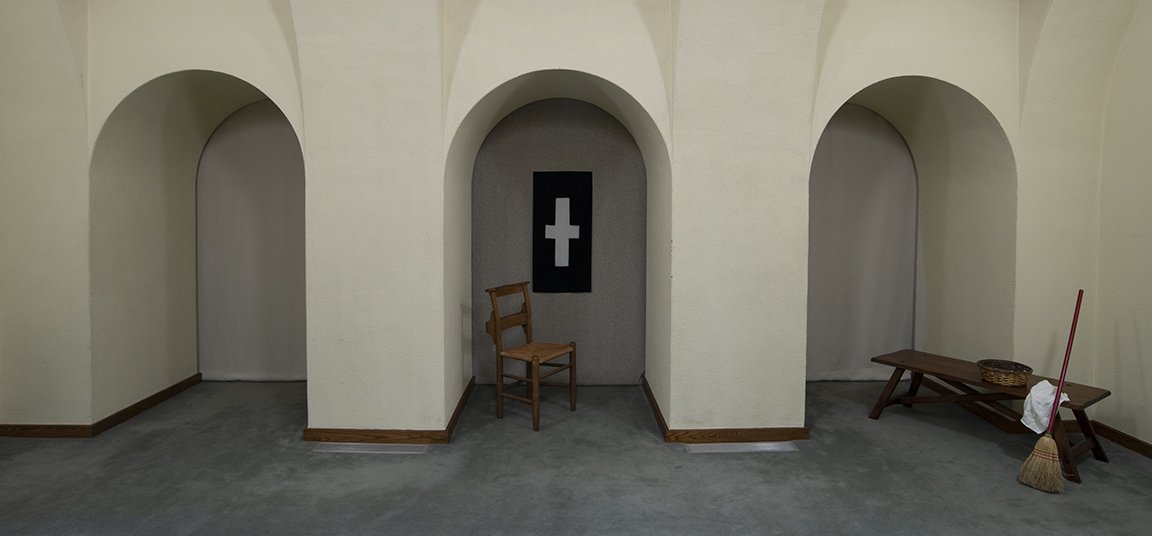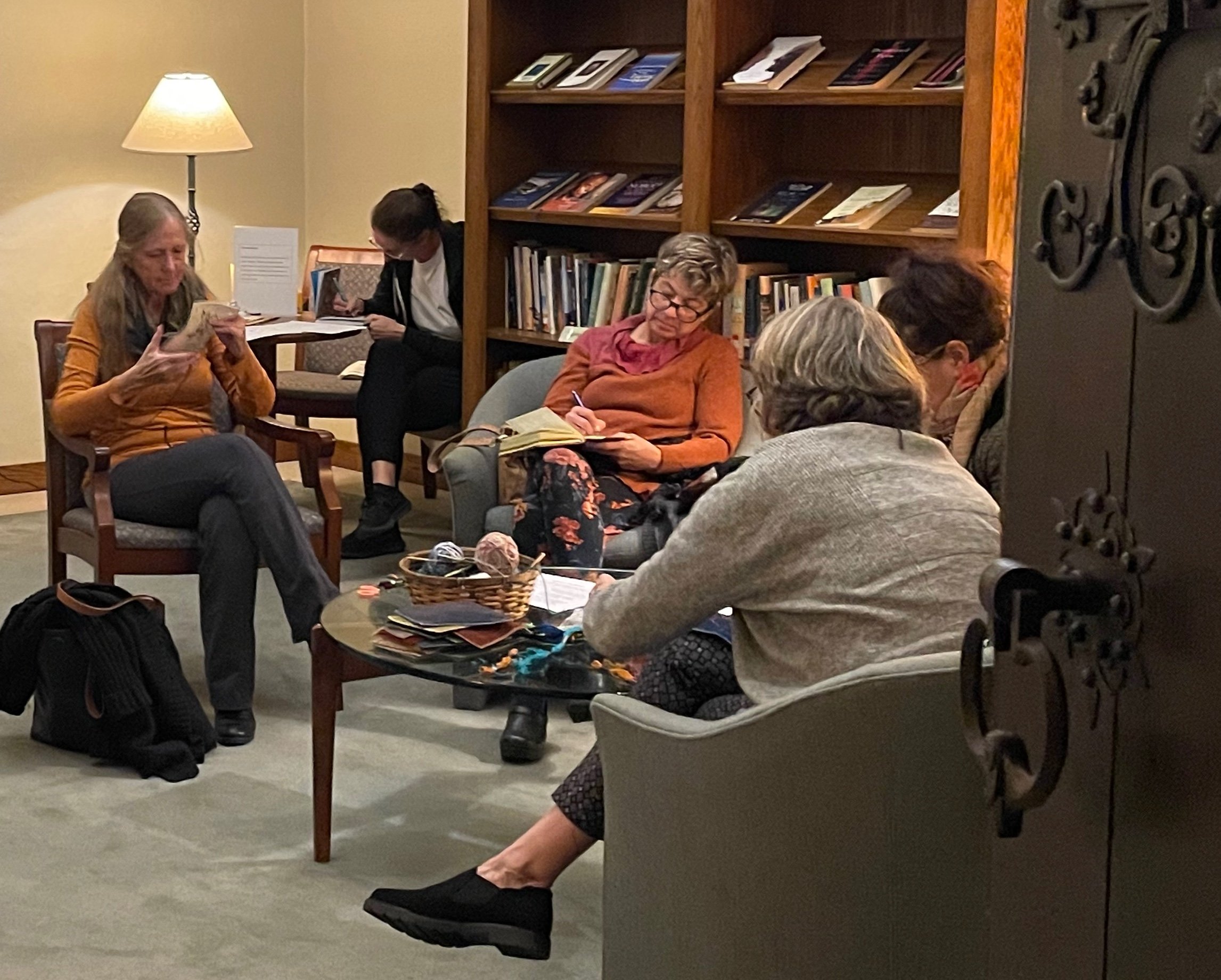Anchorhold
Center for Prayer and Pilgrimage
National Cathedral, Washington DC
November 1-30, 2023
Crypt, National Cathedral of Washington DC
Anchorhold was a temporary installation in the crypt of Washington’s National Cathedral where visitors were invited to participate in contemporary and historic contemplation practices. The Center for Prayer and Pilgrimage hosted the project to celebrate the 650th anniversary of Julian of Norwich’s spiritual visions. A theologian and recluse, Julian lived in a solitary chamber attached to a church (anchorhold) and wrote the earliest surviving English language text by a woman.
Adjacent to St. Dunstan’s chapel, the 8 x 8’ enclosure was lined with natural linen and furnished with a writing desk and chair. The library offered of a series of self-directed activities including meditative reading, responsive writing, and mindful drawing. Public events included labyrinth walks, a poetry workshop, and a communal reading of Julian’s Revelations of Divine Love. I was present in the Center for seven days, attending to visitors and staging Consumed, a durational performance centered around medieval reading practices.
Julian’s cell in Norwich, England
Anchorhold in Washington DC
Communal recording of Julian’s Revelations of Divine Love
Altered book, Julian of Norwich, Revelations of Divine Love, ed. Grace Warrack (London: Methuen & Co., 1901). Oil pastel, watercolor, collage, graphite, gold leaf. 5¼ x 7½ x 1 inch
Installation images by Lee Stalsworth, Laura Litten and Thomas Whalen
All Shall Be Well textile by Terri Lynn Simpson and Carol Woodside
Julian of Norwich: a Brief Reading Guide bibliographic supplement by James Estes
The communal recording of Revelations of Divine Love was made by friends and members of the Cathedral community as an abridged version of Julian of Norwich’s Long Text, which is in the public domain.






